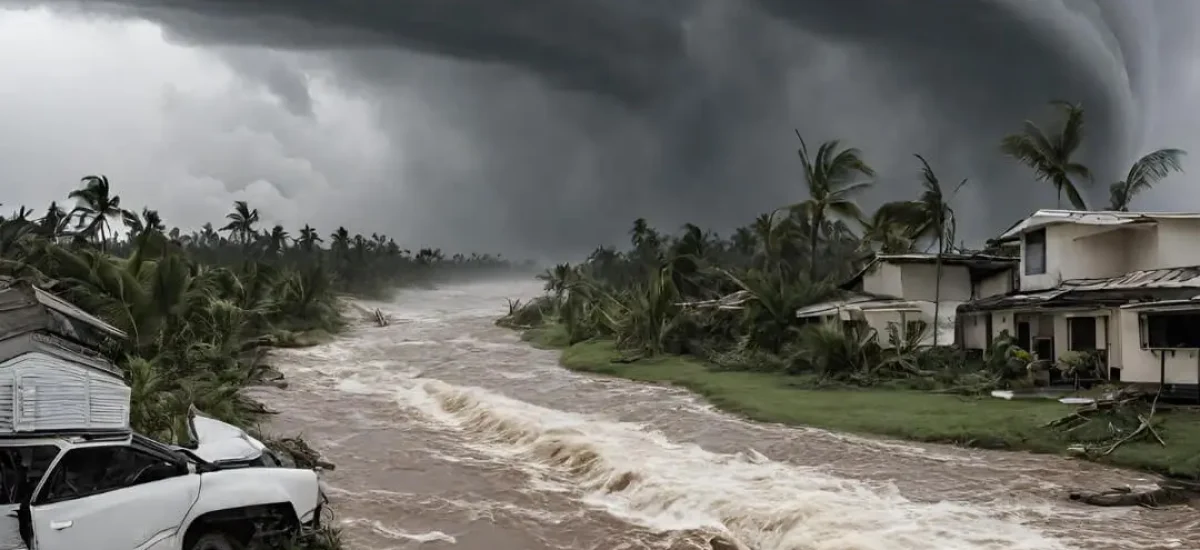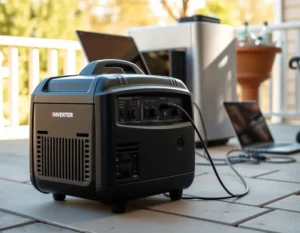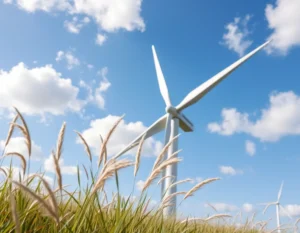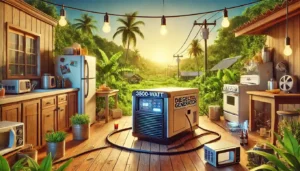What are the types of hurricanes that pass through the Atlantic and the Caribbean?
Hurricanes are natural phenomena that, year after year, affect various areas of the world, especially in the Atlantic and Caribbean regions. These storms, characterized by their destructive power and imposing force, vary in intensity and magnitude.
In this article, we will not only explore the different types of hurricanes that threaten these areas, but we will also highlight the importance of being prepared, and how an electrical generator can make a difference in crisis situations.
Table of Contents
Introduction to hurricanes
A hurricane is not simply a big storm; It is a complex interaction of atmospheric, terrestrial and marine factors. The spiral winds that characterize these storms are generated due to the difference in temperatures between the sea surface and the upper layers of the atmosphere. And it is this thermal energy from the sea that fuels and gives strength to hurricanes, allowing them to reach astonishing speeds and release enormous amounts of rain.
The impact of a hurricane goes beyond strong winds and heavy rainfall. They can generate storm surges that flood coasts, cause landslides and even alter entire ecosystems. Communities in its path must not only face material damage, but also long-term consequences, such as the loss of basic services, infrastructure and, unfortunately, at times, the loss of human life.
Types of hurricanes in the Atlantic and Caribbean
When we talk about the types of hurricanes that hit the Atlantic and the Caribbean, we are referring to large-scale climatic phenomena that can have devastating effects in these regions. Understanding the different types of hurricanes and their classification can help communities better prepare for their eventual arrival.
Saffir-Simpson scale:
To classify the types of hurricanes, the Saffir-Simpson scale is the most used. This tool divides hurricanes into five categories based on their sustained wind speeds:
- Category 1: Winds from 119 to 153 km/h. These types of hurricanes cause minor damage but can still be dangerous.
- Category 2: Winds from 154 to 177 km/h. Hurricanes in this category cause extensive damage, with risk of injury and loss of life.
- Category 3: Winds from 178 to 209 km/h. These types of hurricanes cause devastating damage and represent a high risk to human life.
- Category 4: Winds from 210 to 249 km/h. The damage is catastrophic and the danger to life is very high.
- Category 5: Winds of 250 km/h or more. In this category, the types of hurricanes are absolutely destructive and deadly.
Stages prior to hurricane development
Before reaching the category of hurricane types, these systems go through less intense phases:
Tropical depression: Maximum sustained winds of up to 62 km/h.
Tropical Cyclone (or Tropical Storm): Winds ranging between 63 and 118 km/h. It is the previous step to the types of hurricanes.
Are you finding this information useful?
Preparation and knowledge are essential to face natural phenomena such as hurricanes. If you find this information valuable, we invite you to visit our Blog where we continually share tips, news and recommendations related to Electric generators and electrical safety.

Common trajectories in the Atlantic and Caribbean:
In the Atlantic and Caribbean, hurricane types typically follow paths influenced by high and low pressure systems, ocean currents, and other atmospheric factors. These tracks can direct hurricane types from Africa toward the Caribbean and the east coast of the United States or northward, affecting Bermuda.
Being informed about the types of hurricanes, their categories and trajectories is essential for areas prone to these phenomena in the Atlantic and the Caribbean. Prevention and knowledge are key to guaranteeing the safety and well-being of affected communities.
Season in the Atlantic and Caribbean
The Hurricane season in the Atlantic and Caribbean officially begins on June 1 and ends on November 30. However, it is important to mention that the most active months, in general, are August, September and October.
Factors that influence the activity:
Several factors can influence the intensity and number of hurricanes during hurricane season. Some of these include:
- Water temperature: Hurricanes feed on the heat of ocean water. Warmer waters tend to favor the development and strength of these phenomena.
- Atmospheric patterns: High and low pressure systems, along with other atmospheric factors, can influence the formation and direction of hurricanes.
- Climatic events: Conditions such as El Niño and La Niña can have an impact on hurricane season activity. For example, El Niño tends to reduce activity in the Atlantic.
Predictions and monitoring
Before and during hurricane season, meteorological agencies and specialized centers make predictions about expected activity based on models and historical data. It is crucial to pay attention to these predictions and the alerts issued to take the necessary precautions.
Preparation and awareness
Knowing that hurricane season can bring potentially destructive phenomena, it is essential that communities prepare adequately. This means having evacuation plans, emergency kits, and being constantly informed about current weather conditions and predictions.
Importance of having electric generators
Amid the devastating force of a hurricane, electrical infrastructure is often one of the first to be affected. Power interruptions not only cause inconvenience, but can also have serious repercussions on the safety and preservation of essential assets. This is where electrical generators come into play.
A Diesel emergency generator It becomes a reliable source of power during long outages.
Do you need advice?
Choosing the right electric generator for your needs can seem like a complex task. At JRH Power Generator we understand the importance of an informed choice. Our team of experts is ready to guide you every step of the way, ensuring you get the equipment that best suits your needs.
Do not entertain doubts. Our commitment is to guarantee your safety and well-being. Contact our advisors and discover how we can help you be prepared for any eventuality.

En el mundo moderno, donde la electricidad es fundamental para nuestras actividades diarias, las interrupciones eléctricas son un gran inconveniente, pueden afectar nuestra productividad y

Las turbinas eólicas se han convertido en el emblema de la energía renovable, ofreciendo una solución sostenible y limpia frente a los combustibles fósiles. Sin

Cuando se trata de mantener la energía en situaciones de emergencia, durante viajes de campamento o en eventos al aire libre, un generador de 3500

En tiempos de cortes de energía o desastres naturales, saber cómo usar un generador para alimentar una casa puede marcar la diferencia entre estar preparado

La búsqueda de energías alternativas se ha convertido en un pilar fundamental en la discusión sobre sostenibilidad y el futuro energético del planeta. Pero, ¿cuáles

En un mundo donde la demanda de energía eléctrica sigue en aumento, las interrupciones de servicio y el costo creciente de la electricidad han impulsado

